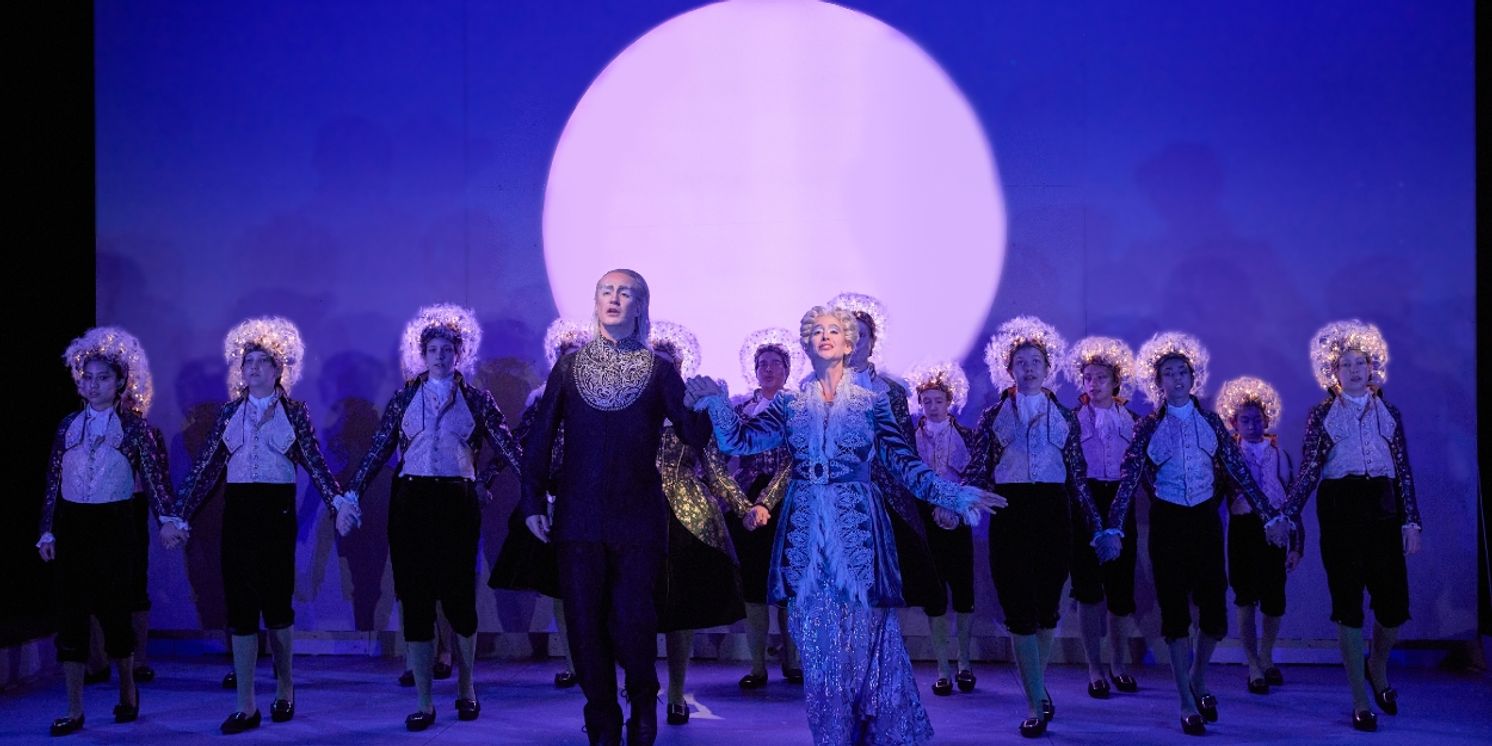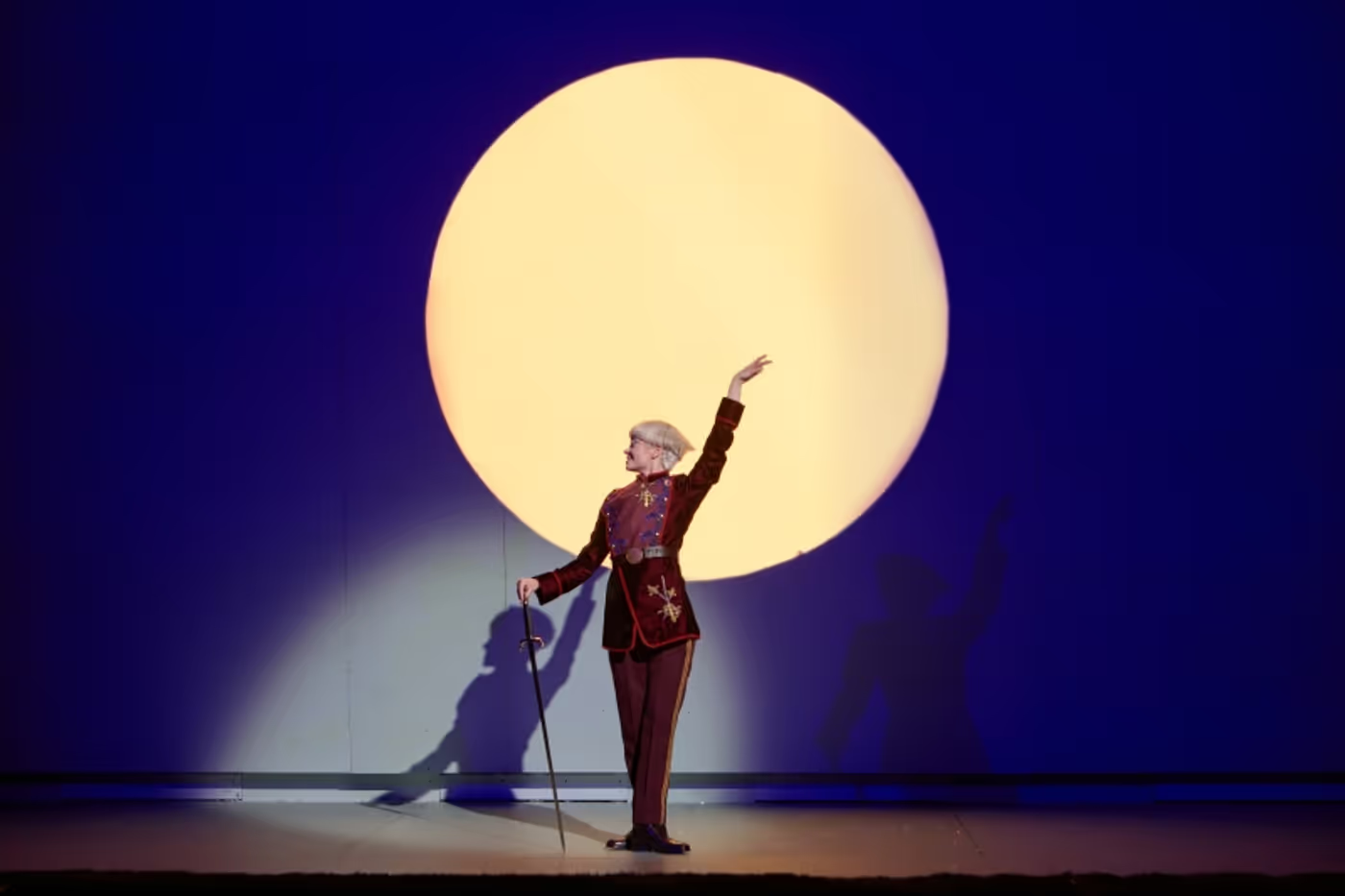Review: A MIDSUMMER NIGHT'S DREAM at Opera Theatre Of Saint Louis
This production plays at Opera Theatre of St. Louis through June 28.

Opera Theatre of St. Louis draws us into a truly enchanted forest. In staging Benjamin Britten’s A Midsummer Night’s Dream they create a marvelous amalgam of strange and gorgeous music, superlative voices, and design and directorial genius. And they are unerringly true to Shakespeare’s iconic tale.
This is a real gem of a production. You don’t want to miss it.
As we enter the theater we see a lovely misty forest on a midsummer evening. The lights dim, Maestro Leonard Slatkin is welcomed, and the play begins. The orchestra murmurs softly, it whispers, drawing us into this rather eerie faerie world. Low strings utter glissandos and retreats, more glissandos a bit louder. Where are we being led? Is it safe?
The faerie denizens of this forest appear. Cobweb, Mustardseed, Peaseblossom and Moth are fairies-in-waiting to their queen Tytania. They are accompanied by a dozen or so smaller sprites (members of the St. Louis Children’s Choruses). All these fairy folk are a visual delight—they are dandelions with wigs in full white fluff! Light and graceful. It is simply perfect!
Their beloved rulers, King Oberon and Queen Tytania—with Puck, Oberon’s Jack-of-all-errands—are grandly clad in silver and black, all with silver-white hair. The swift and agile Puck is something of a shape-changer; he can appear as a miniature Oberon, in a mannish flowing ankle-length black leather coat—or he (she?) can appear in a sleek silver evening gown—a reflection of the glamorous Tytania. (We receive this as simply shape-changing, not gender politics.)
Oberon and Tytania have quarreled about the ownership of a beautiful changeling boy she has acquired. Oberon wants him. What are his purposes in desiring this boy? Benign, let’s say.
This is a special evening. Tomorrow Duke Theseus will marry his bride the Amazon chieftain Hypolita. He had conquered her in battle and had captured her as war booty. And yet she seems quite amenable to marrying him. (Ah, well. Times change.)
So marriage is in the air.
Four young lovers have ventured into the magical woods—Lysander, Hermia, Demetrius, and Helena. Much of the plot deals with the shifting of romantic attachments under the influence of magic eye-drops—ordered by Oberon and (mis)administered by Puck.
“The rude mechanicals” appear—an endlessly reliable comic troupe. They rehearse the tragedy of Pyramus and Thisbe which they hope to perform at the Duke’s wedding. It’s all in a clowning, low-comic style that stretches back at least a thousand years.
The libretto of this opera, by Britten and Peter Pears, is pure Shakespeare. They have cut about half of Shakespeare’s text, but what could they do? When dialogue is sung it takes three-to-four times as long as when it’s spoken. (You want to watch a romantic comedy for six hours?) And yet the story is intact. (Shakespeare was a dreadful digressor.)
I can’t recall ever seeing any operatic production where all the artistic elements were so perfectly integrated:
- Shakespeare’s peerless gifts for mood-painting, imagery, fantasy, novel characters, and sheer language charm are vital to this piece. The choice to use only his text was so very right. We happily drown in that flow of words. We float on the antique fragrance of “wild thyme, oxlips, violets, woodbine, musk-roses, eglantine”. And OTSL gives us supertitles, even though the lyrics are in English. That’s a perquisite that, for a modern audience, should be available even in non-operatic productions of Shakespeare.
- Benjamin Britten’s score is gorgeous and strange. It is quite accessible, yet we meet occasional dissonance—and ever and anon those eerie glissandos. They tend to blur the borders between the faerie and the real worlds.
- The Stage Director is Tim Albery, who directed that stunning Coronation of Poppeia a few years back. He does magic with the same nearly bare stage that the Elizabethans used.
Scenic and costume design is by Emma Kingsbury, and it is exquisite! With beautiful painted drops and scrims her forest can change from summer to winter in the blink of an eye—as required by the faerie forces at play here. And the bold shift from the forest to the hard-edged reality of Theseus’ court is inspired. Her clothing of Oberon, Tytania and Puck is timelessly antique-Romantic. Ms. Kingsbury is a very major talent; she has designed Wagner for La Scala.
Krystal Balleza and Will Vicari are the wig and makeup designers, and their work is brilliant.
Whoever built the donkey’s head for Bottom did a miracle. It’s realistic, the mouth moves—and Ben Brady’s voice projects through it unimpeded!
Seán Curran, as usual, charms with his choreography. - The voices! OTSL, as always, gives us world-class singers.

James Laing (Oberon), Jana McIntkyre (Tytania)
Counter-tenor James Laing presents a striking Oberon. Vocally, as physically, he embodies smooth and graceful power.
The beautiful Jana McIntyre sings Tytania. Her voice—as purely silver as her gown—masters some splendid Bel Canto decorations in the nearest thing this work has to an “aria”.
Matisse Carmack (Puck)
Puck is a non-singing role but young Matisse Carmack makes Puck every bit as important as any other role on stage. She’s slight, quick, agile, a joy to watch as she speeds about on her magical errands. She delivers Shakespeare’s closing “apology” to the audience quite masterfully.
The “rude mechanicals” wring every laugh out of their vaudeville-ish schtick. Robert Mellon, Dylan Gregg, Adam Partridge, Christian Sanders, Sam Krausz, and Ben Brady have worlds of fun with their stumbling attempt at tragedy. Mr. Brady is quite hilarious as Bottom—in both his human and donkey forms. Mr. Sanders makes an adorable Thisbe. (Mr. Mellon, by the way, signed on for a quite heroic gig: on June 28 he will sing major roles in Midsummer Night’s Dream in a matinee and in Fledermaus in the evening.
The four lovers are sung by Anthony Léon, Jennifer Johnson Cano, Theo Hoffman, and Teresa Parrotta. All do fine work indeed.
The children’s chorus is delicious. With Emily Kealani (Cobweb), Veronica Siebert (Mustardseed), Laura Santamaria (Peaseblossom), and Zoe Brooks (Moth) as—what?—perhaps fairy camp-counselors?—this chorus is wonderful. There’s a gorgeous lullaby, an enchanting farewell serenade. Congratulations to Chorus Master Andrew Whitfield. - The orchestra! From the moment of tuning-up one is aware of the marvelous acoustics in the Loretto Hilton Center. Each instrument seems so close, so present. Led by our beloved Leonard Slatkin these SLSO musicians reach perfection in every subtlety of the score.
This was my introduction to Benjamin Britten’s A Midsummer Night’s Dream. I absolutely loved it! It plays at Opera Theatre of St. Louis through June 28.
(Photo by Eric Woolsey)
Reader Reviews

Videos

